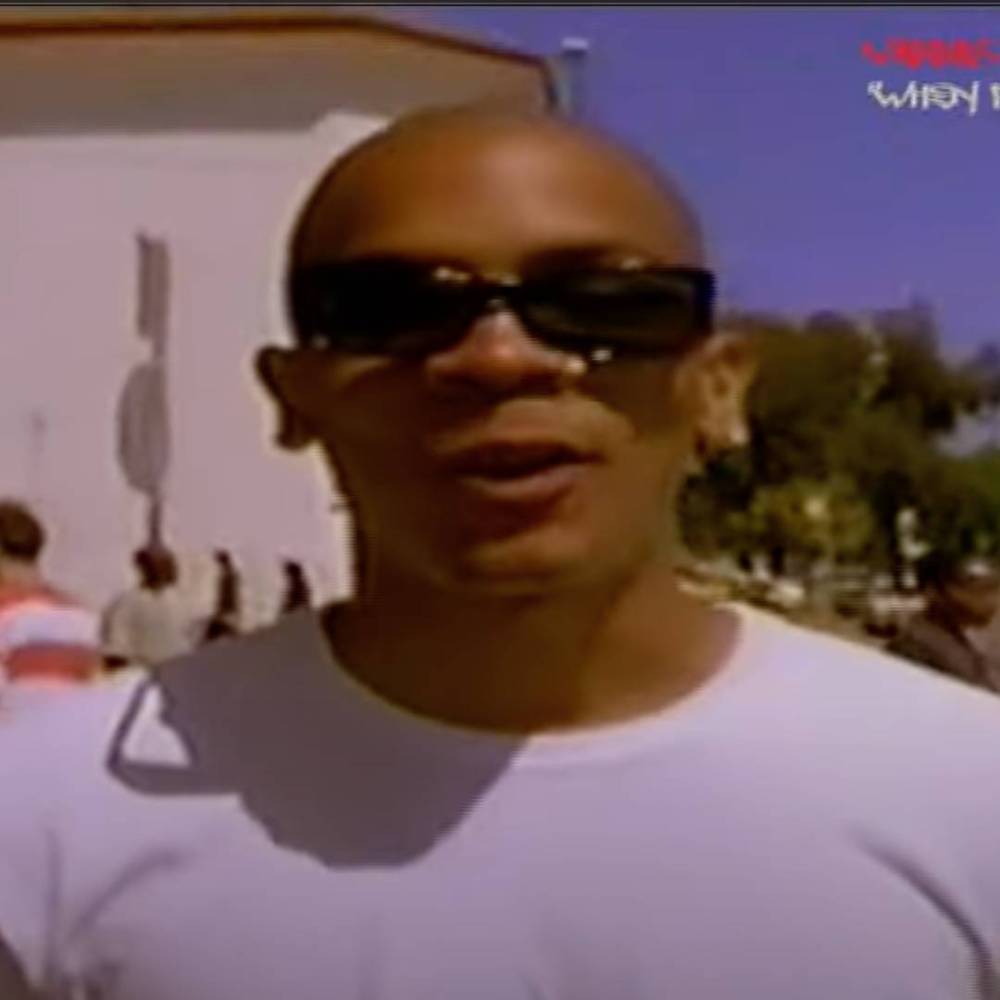Image via “Light Sleeper” video/YouTube
David Ma‘s TV ain’t HD, that’s too real.
Halfway through Boxcar Sessions, Saafir wonders “Where will I go when I die? Will I be underground like I am now, or in the sky?” When the news broke that Saafir had passed, we already knew the answer. We already knew that West Oakland’s light sleeper had soared high for decades. We always knew he was a master.
Nobody ever once said Saafir was overrated. It was impossible. Even if the influence is sometimes second-hand, his innovations still sound fresh and are felt among the most futuristic modern rappers. His 30-year-old sentences await decoding by new listeners. The Saucee Nomad of the Hobo Junction crew unspooled dense, unpredictable clusters of rhymes. Hearing him for the first time was like hearing another East Bay genius Pharoah Sanders: virtuosic, original, and full of ancient cryptic soul.
In an era of hyper-creativity, 1994’s Boxcar Sessions still stood out. A dark, unsettling experience, wise but paranoid, perplexing as a hieroglyphic. In many ways, it feels like the West Coast precursor to Funcrusher Plus or the Bay Area analogue to the modal levitations of Freestyle Fellowship and the Project Blowed emcees. It was slightly psychedelic, claustrophobic, and firmly of its region. If Del and Digital Underground had first shown the world the left-handed eccentric whimsy of the Bay, Saafir added layers of complexity and concrete rigor. He repped the West, but not through lines like “California knows how to party;” he did it by describing intense high-speed drives down 280 and shooting videos by the railroad tracks that connected the continent.
A lesser-known but important part of Saafir’s personal history is that he survived a fiery plane crash around 1992 (TWA flight 843). Barely escaping through literal flames with broken vertebrae, this marked the start of back-related issues that afflicted him for much of his life.
In the aftermath of the accident, Saafir quickly ascended through a perfect confluence of timing, talent, and circumstance. A second-wave member of Digital Underground, he joined first as a dancer then a rapper who left his mark all over the group’s overlooked but excellent The Body- Hat Syndrome. Around this same time he roomed with fellow Digital Underground alumni, Tupac, whose introduction to the Hughes Brothers led to Saafir winning a part as Cousin Harold in their era-defining film, Menace II Society. The rapper and producer was now an actor and figure of hip-hop renown from San Jose to Vallejo.
You can’t mention Saafir’s mythical reputation and place in Bay Area lore without mentioning one of the most legendary moments in California radio history – the famous on-air battle on Sway and King Tech’s KMEL radio show that earned him a deal on Quincy Jones’ Qwest Records (where he would soon release Boxcar Sessions).
The battle was sparked by a friendly beef over a perceived slight between Saafir and Casual. Casual had showcased Saafir on his major label debut, Fear Itself, when the two were still friendly. On an interlude called “That Bullshit,” Saafir raps for exactly one minute and nearly steals the show. When Saafir asked Casual to return the favor and appear on Boxcar Sessions, the latter flaked on their studio session.
Somehow, the KMEL Battle morphed into a Hobo Junction versus Hiero battle. Though it was officially declared a draw by Sway and Tech, footage proved that Saafir was essentially an army-of-one, single-handedly taking on a young and ferocious Hieroglyphics crew. During the exchange, he proclaimed: “I’m the one to which one turns to for help in desperation.” A silently stunned Hobo Junction seemed to agree. He not only left unscathed but arguably won.
It’s hard not to avoid ruminating on what might have been. This was the ‘90s, where brilliant left-field rappers were often abandoned by their labels if they failed to go gold or platinum (see Hiero, Fellowship, and countless others). A long-promised Golden State Warriors crew album with Xzibit and Rass Kass never materialized. All you need to do is listen to “3 Card Molly” to understand that they could’ve been the rap game KD, Klay, and Curry before that other holy trinity existed.
In the early 2000s, Saafir’s seeming invincibility was somewhat humanized. After a brief stint away due to legal troubles, and a few releases (Trigonometry and The Hit List) he reemerged openly speaking on his health and regrets for his past proclivities. He had also converted to Islam and a 2006 album titled Good Game: The Transition, suggested that he was actively changing his ways. His health challenges were well known, but it was still sobering to see a once vital, boastful artist confined to a wheelchair. He added agency to his situation by advocating for improved healthcare, letting people know that even bulletproof MCs can be vulnerable. And he even made up with Casual.
In a 2013 interview with 48 Hills, he spoke openly about his experience: “I’m not a paraplegic; my legs are still active… it’s just getting the right kind of treatment… in order to get my legs to work…I have insurance but insurance only covers so much so I’m trying to make sure… I can step back into the position I need to be in.”
With Saafir’s passing, a boxcar-sized rip in the universe opens up. It won’t be filled. No one sounded like him because they can’t. His work still leaves listeners straining to completely understand his savage cadences and runic ideas. But there’s solace in the fact that an entirely new generation will now get to discover Saafir for the first time in light of his death. I hope he went in peace, that his health issues dissolved in an instant, and that the flowers he was given from the Bay and beyond were profoundly felt. Rest deeply, Light Sleeper.


